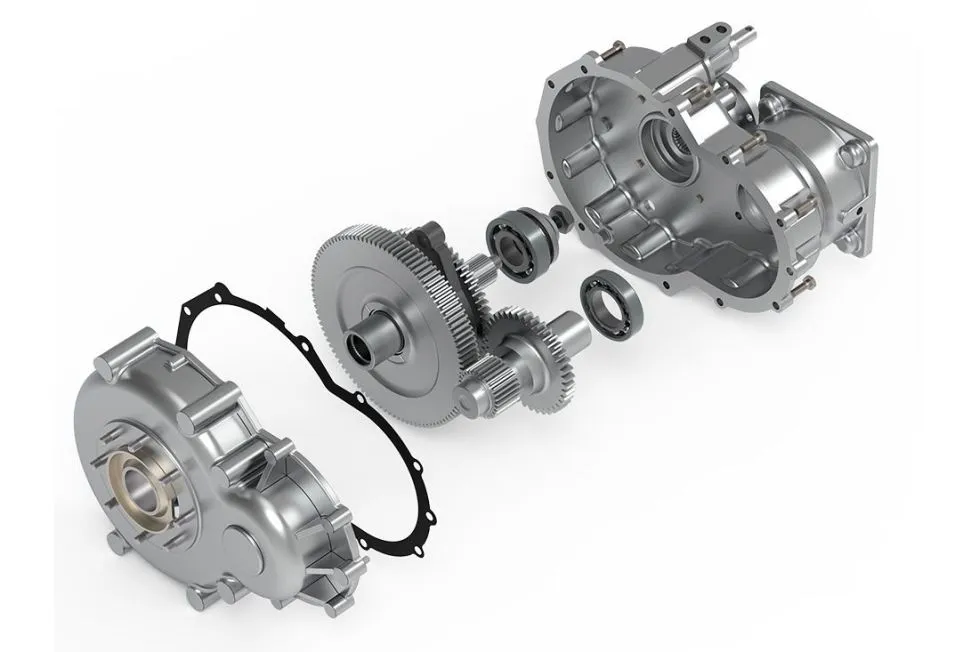Reduction Gear-Everything You Need To Know
Application of Reduction Gear on Electric Motor
Electric motor is a device that converts electrical energy into mechanical energy. It usually consists of an electric motor and a reduction gear. The motor converts electrical energy into rotational force through the principle of electromagnetic induction, while the reduction gear reduces the high-speed output of the motor rotation to a suitable speed and increases the torque output to facilitate mechanical movement.

Functions of Reduction Gear
The function of the reduction gear in the motor is to reduce the output speed of the motor and increase the output torque. In some mechanical movements, high-speed movement will lead to increased loss and noise of mechanical components, and low-speed and high-torque output is more suitable for these application scenarios. Therefore, reduction gears are usually used in mechanical transmission to achieve low-speed and high-torque output of electric motors.
How Is Reduction Gear Manufactured
Electric motor gears are manufactured through machining, usually using processes such as precision casting, machining and heat treatment. First, according to the output power of the motor and the required speed ratio, the material, number of gears, and gear module of the reduction gear are determined. Then, processing equipment such as CNC machine tools is used to perform precision machining of the gears so that they have high gear accuracy and surface finish. Finally, through heat treatment and other processes, the hardness and strength of the gear are improved to meet the requirements of long-term use.
Many electric motors require reduction gears to achieve low speed and high torque output, such as drives used in industrial automation, robotics, food processing and other fields. In addition, in the automotive industry, electric motor gears are also needed to drive the vehicle's transmission system to achieve variable speed and increased torque of power output.
Lida produces high quality reduction gears in stainless steel, carbon steel and alloy steel, our reduction gears have been exported to over 100 countries. We have rich experience in manufacturing various machinery parts in multiple materials. Contact us if you have such needs to get a free quote.
Features of Stainless Steel: Stainless steel is highly resistant to corrosion and oxidation and performs well in humid, corrosive and high-temperature environments, but its material cost is high.

Features of Carbon Steel: Carbon steel is a widely used material with the advantages of low cost and high strength, but it is prone to wear and fatigue fracture under high load and high speed operation.
Features of Alloy Steel: Alloy steel usually adds other elements to improve its properties, such as nickel, chromium, molybdenum, etc. It has the advantages of high strength, wear resistance, corrosion resistance, etc., but the manufacturing cost is relatively high.
How to Select the Most Suitable Material to Manufacture Reduction Gear
1. Load capacity: When selecting gear material, its load capacity should be considered. Typically, high-strength alloy steel and ductile iron are ideal choices.
2. Rotation speed: The higher the rotation speed, the more friction heat is generated. Therefore, materials with good high temperature resistance should be selected in high-speed working environments.
3. Corrosive environment: If the working environment contains corrosive environments such as acid, alkali, and moisture, materials with good corrosion resistance, such as stainless steel, should be selected.
4. Occasions with high requirements on noise and vibration: In this case, gray cast iron has good shock absorption and is also a good choice.
In short, choosing a suitable gear material for the reducer can not only improve the performance and life of the reducer, but is also an important part of ensuring the mechanical transmission system.














